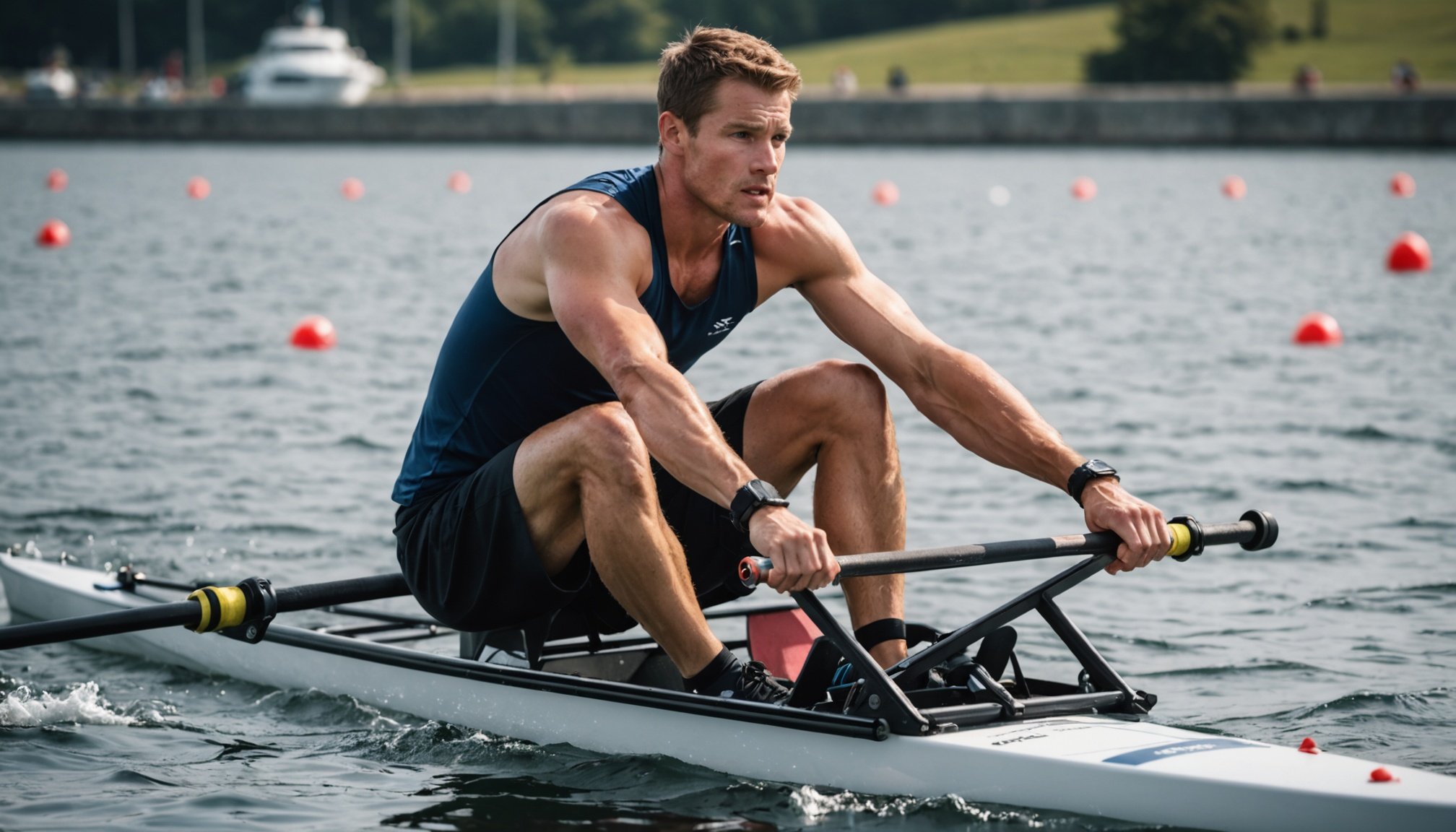Advanced Cross-Training Techniques for Cardiovascular Endurance
Enhancing cardiovascular endurance is essential for rowers aiming for peak performance. Implementing innovative cross-training can provide diverse benefits, reinforcing both stamina and skill. Cross-training introduces varied workouts that challenge the body differently from traditional rowing, aiding in injury prevention and overall fitness improvement.
One striking technique is integrating rowing-specific exercises combined with systemic endurance activities like cycling or swimming. These methods create a robust foundation for rowers, building muscular strength and cardiovascular health synergistically. Not only do these activities diversify workout routines, but they also engage different muscle groups, reducing repetitive stress on joints.
Also to see : What are the dangers of overtraining and how can you prevent it?
Evidence from various studies suggests that incorporating cross-training leads to significant enhancements in both endurance and performance. Reports document rowers experiencing improved aerobic capacity and reduced exhaustion levels during competitive events. As cross-training encourages the usage of underutilised muscle groups, athletes gain a comprehensive physical edge that purely traditional rowing training might not fully provide.
In short, cross-training serves as an effective avenue for rowers, promoting overall cardiovascular endurance and lifelong athletic health. By engaging in such diverse training techniques, rowers can truly harness their full potential on the water.
Also read : Top Core Strengthening Exercises Every Rower Needs for Peak Performance
Practical Tips for Incorporating Cross-Training into a Rowing Regimen
Integrating cross-training implementation seamlessly into a rower’s training regimen can optimise performance. Competitive rowers often face challenges when balancing routine rowing practices with cross-training. Here’s a guide to help navigate these challenges, integrating techniques effectively.
Scheduling workouts is crucial. Balance is key, ensuring rowing sessions do not overshadow cross-training efforts. Consider alternating days dedicated to rowing with those focused on cross-training exercises. It’s beneficial to match the intensity levels of both activities to achieve equilibrium in training load.
Monitoring progress is vital for continual improvement. Use performance metrics such as heart rate, stamina levels, and muscle fatigue to assess the impact of cross-training. Make informed adjustments to your training plan based on these insights. Are you witnessing improvement in performance metrics? If so, this signals a successful integration, necessitating continued practice.
The consistent application of these strategies fosters a harmonious relationship between rowing and cross-training, enhancing cardiovascular endurance. Aim for a dynamic regimen allowing flexibility while prioritising both methods equally. Following these structured approaches ensures that rowers can maintain their competitive edge and reach peak physical condition.
Specific Exercises Targeting Cardiovascular Endurance
Mastering the art of endurance exercises is vital for rowers aiming to boost their cardiovascular workouts and overall performance. Tailoring exercises specifically to fit rowing needs can make a substantial impact.
High-Intensity Interval Training (HIIT) Exercises
HIIT is a game-changer for enhancing cardiovascular health. For rowers, it offers bursts of intense effort followed by recovery, simulating race conditions. This approach is proven to boost aerobic capacity quickly. An example workout consists of 30-second sprints followed by 90 seconds of active rest. Crucially, post-HIIT recovery is essential; cooling down aids muscle repair.
Resistance Training for Rowers
Strength is a cornerstone of rowing success. Emphasising resistance exercises like deadlifts or rows fortifies muscles supporting endurance. Building a plan that targets these areas enhances both power and stamina subtly. It’s vital to complement these sessions with rowing to avoid overtraining.
Aerobic Conditioning Workouts
Aerobic exercises, such as long-distance cycling or swimming, are excellent for boosting a rower’s endurance base. A weekly plan may involve three varied sessions, gradually increasing intensity and duration. Evidence clearly indicates enhanced performance through consistent aerobic training. Integrating these exercises diversifies a rower’s capabilities, leading to more efficient energy use during races.
Case Studies and Success Stories
Exploring athlete case studies provides insights into the successful implementation of cross-training programs. Rowers like Sarah, who adopted innovative cross-training practices, have witnessed significant enhancements in stamina and technique. She incorporated a balanced regimen comprising rowing, cycling, and resistance exercises, leading to noticeable performance gains in competitions.
In-depth interviews with coaches reveal common strategies employed to boost cardiovascular endurance. Coach Tom emphasizes the gradual integration of cross-training routines tailored to each athlete’s unique strengths and weaknesses. By assessing specific needs, he has enabled numerous rowers to achieve their peak potential while minimizing injury risks.
The analysis of real-world results underscores the transformative effect of cross-training on rowing performance. Metrics from several elite athletes indicate marked improvements in speed, endurance, and overall competitive performance. This data reinforces the cross-training approach, highlighting its efficacy in cultivating comprehensive athletic development.
Incorporating cross-training techniques has proven valuable for many rowers, as evidenced by these success stories. Through a meticulously planned and executed approach, athletes can effectively elevate their skill levels and excel in their rowing careers. Witnessing such achievements can profoundly inspire others to adopt these methodologies.
Visual Aids and Demonstrative Resources
Effectively comprehending and applying rowing techniques and training resources significantly impacts the outcome of cross-training. Visual aids, such as instructional videos, charts, and diagrams, play an integral role in enhancing this understanding. These resources bridge knowledge gaps, especially for those pursuing innovative cross-training methods to boost cardiovascular endurance.
Videos showcasing step-by-step demonstrations provide clarity on complex movements. They allow rowers to visualise proper form and execution of both exercises and techniques specific to rowing. For instance, a well-curated video on HIIT exercises can uncover nuances often missed in written descriptions.
Furthermore, diagrams serve as quick reference tools, highlighting muscle groups activated during specific workouts or illustrating correct rowing posture. A visual breakdown of exercises helps athletes align their practice with optimal techniques.
Training resources that incorporate visual elements enable rowers to refine their approach, ensuring consistency and effectiveness across their training regimen. As each athlete interprets information differently, diverse resources cater to varied learning styles, fostering better skills acquisition.
Incorporating these visual aids not only accelerates learning but also empowers rowers to perfect their routines, ultimately leading to enhanced overall performance.











